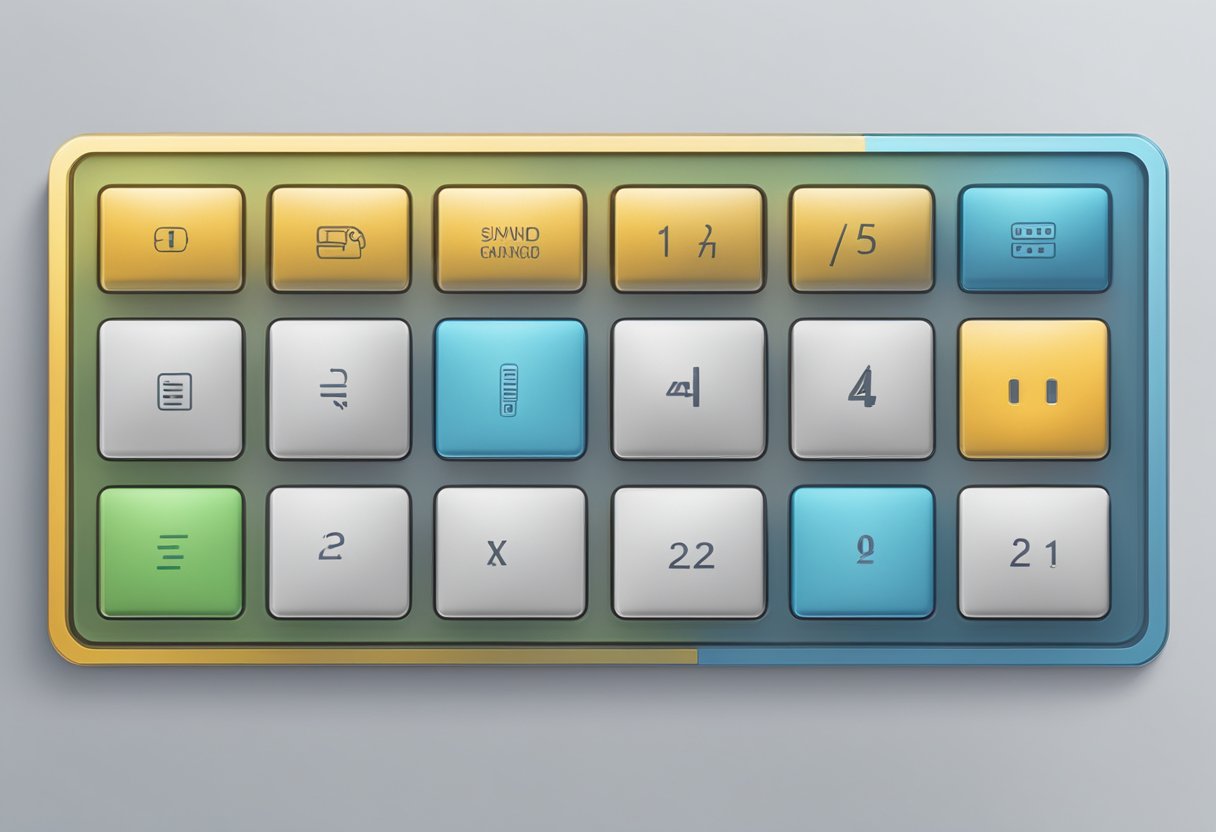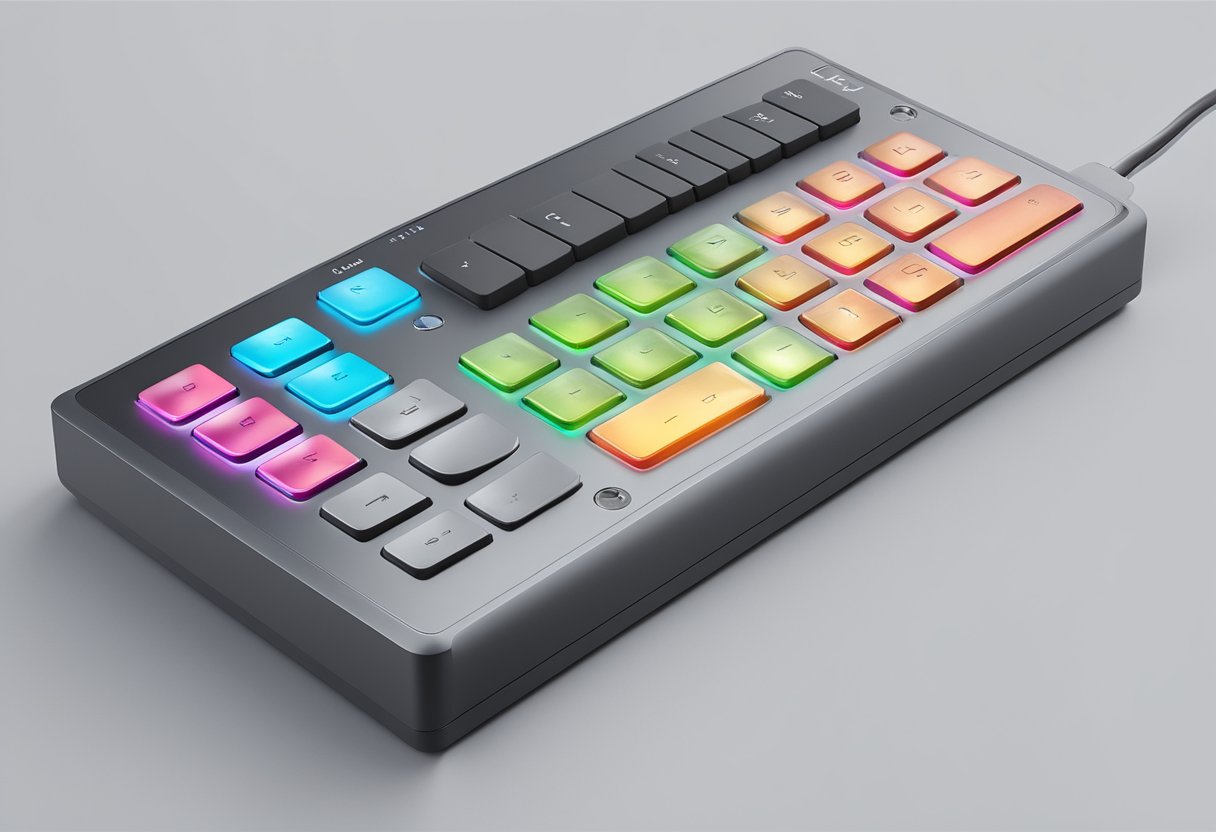Contact
Write to Us And We Would Be Happy to Advise You.
Do you have any questions, or would you like to speak directly with a representative?
By peter
If you’re looking for a simple and cost-effective way to add user input to your electronics project, a 1×4 membrane keypad might be the perfect solution. Membrane keypads are thin, flexible, and easy to use, making them a popular choice for a wide range of applications. A 1×4 keypad is a specific type of membrane keypad that features four buttons arranged in a single row.

One of the advantages of a 1×4 membrane keypad is its compact size. With only four buttons, it takes up very little space on your circuit board or device enclosure. This can be especially useful if you’re working with a small project or need to conserve space. Additionally, membrane keypads are typically very affordable, making them a great option for hobbyists and professionals alike.
When designing a project that requires user input, it’s important to consider the type of keypad that will work best for your specific needs. A 1×4 membrane keypad is a simple and effective option that can be used in a wide range of applications. Whether you’re building a custom calculator, a game controller, or a security system, a 1×4 keypad can provide reliable and intuitive input functionality.

If you are looking for a simple and cost-effective way to input data or commands into your electronic devices, a 1×4 membrane keypad might be the perfect solution for you. These keypads are compact, lightweight, and easy to use, making them ideal for a wide range of applications, from industrial control panels to consumer electronics.
A 1×4 membrane keypad consists of four buttons arranged in a single row, with each button corresponding to a specific input function. The buttons are made of a thin, flexible material that allows them to be pressed easily, and they are mounted on a printed circuit board (PCB) that contains the electrical contacts and wiring necessary to transmit the input signals to the device.
The PCB is covered by a thin, transparent membrane that protects the buttons from dust and debris while allowing them to be easily pressed. The membrane is printed with symbols or labels that indicate the function of each button, and it can be customized to meet the specific needs of your application.
When you press a button on a 1×4 membrane keypad, it compresses the flexible material and makes contact with the electrical contacts on the PCB. This completes a circuit and sends a signal to the device, which interprets the signal as a specific input command.
One of the key advantages of 1×4 membrane keypads is that they do not require any external power source or complex circuitry to operate. Instead, they rely on the simple principle of completing a circuit when a button is pressed, which makes them reliable, durable, and easy to use.
In summary, 1×4 membrane keypads are a versatile and practical input solution for a wide range of electronic devices. They are simple to use, cost-effective, and customizable, making them an ideal choice for anyone looking for a reliable and efficient way to input data and commands.

A 1×4 membrane keypad is a type of electrical switch that uses a matrix arrangement to control the flow of electrical signals. The “1×4” specification indicates the configuration of the switch, where there is one input and four outputs. The keys on the keypad are arranged in a 1×4 matrix, with one row and four columns. Each key is assigned to a certain row and column, and when pressed, it creates a link between the corresponding row and column.
The 1×4 membrane keypad is a low-cost, reliable, and durable input device that is commonly used in microcontroller projects. It typically operates at a voltage of DC 12V and has a maximum current rating of 50mA. The electrical resistance of the switch is usually in the range of 100 ohms to 500 ohms, depending on the design and material composition.
The 1×4 membrane keypad is made up of several layers of materials, including a top layer of polyester or polycarbonate film, a middle layer of conductive material such as silver or carbon, and a bottom layer of adhesive material. The conductive material is used to create a circuit when the keypad is pressed. The top layer is usually printed with symbols or numbers that correspond to the function of each key.
In summary, the 1×4 membrane keypad is a compact and reliable input device that is commonly used in microcontroller projects. Its simple and robust design, low cost, and ease of use make it a popular choice for DIY electronics enthusiasts and professionals alike. The key layout, electrical characteristics, and material composition of the keypad are important factors to consider when designing and using this type of input device.
When it comes to integrating a 1×4 membrane keypad with electronics, there are a few things to keep in mind. In this section, we will discuss the connection interfaces and compatibility issues that you may encounter.
The 1×4 membrane keypad can be connected to an Arduino or other microcontroller using a variety of interfaces. One common method is to use jumper wires to connect the keypad to the microcontroller’s digital pins. Each button on the keypad is connected to a specific pin, which allows the microcontroller to detect when a button is pressed.
Another option is to use a keypad library, which simplifies the process of reading button presses from the keypad. The library handles the low-level details of interfacing with the keypad, allowing you to focus on the higher-level logic of your project.
When integrating a 1×4 membrane keypad with electronics, compatibility issues can arise. For example, if you are using an older microcontroller that operates at a lower voltage, the keypad may not function properly. In this case, you may need to use level shifters or other components to ensure that the voltage levels are compatible.
Another potential issue is with the keypad’s pinout. Different manufacturers may use different pinouts for their keypads, which can make it difficult to interface with them. Be sure to check the datasheet for your specific keypad to ensure that you are connecting it correctly.
Overall, integrating a 1×4 membrane keypad with electronics is a straightforward process that can be accomplished using a variety of connection interfaces. By understanding the compatibility issues that can arise, you can ensure that your project operates smoothly and reliably.
1×4 membrane keypads are widely used in various applications, ranging from consumer electronics to industrial control panels. In this section, we will discuss some of the most common applications and uses of 1×4 membrane keypads.
1×4 membrane keypads are commonly used in consumer electronics such as remote controls, calculators, and small appliances. They provide a cost-effective and reliable input solution for devices that require a limited number of buttons. Due to their low profile and compact size, they are also ideal for portable devices such as handheld gaming consoles and mobile phones.
In addition, 1×4 membrane keypads are often used in home automation systems and smart devices. They can be customized to include specific functions and symbols, making them an ideal input solution for controlling various devices in a smart home environment.
1×4 membrane keypads are also widely used in industrial control panels and machinery. They provide a durable and reliable input solution that can withstand harsh environments and heavy usage. They are often used in applications such as process control, factory automation, and machinery operation.
In industrial applications, 1×4 membrane keypads are often customized to include specific functions and symbols that are relevant to the application. They can also be designed to meet specific safety standards and regulations, making them an ideal input solution for industrial control panels and machinery.
Overall, 1×4 membrane keypads are a versatile and cost-effective input solution that can be used in a wide range of applications. Whether you are designing a consumer electronics device or an industrial control panel, a 1×4 membrane keypad can provide a reliable and durable input solution that meets your specific requirements.
Maintaining your 1×4 membrane keypad is essential to ensure its longevity and optimal performance. Regular cleaning and inspection can help identify and prevent potential problems. Here are some tips to help you maintain and troubleshoot your 1×4 membrane keypad.
One common fault with membrane keypads is a non-responsive key. This can be caused by dirt, dust, or debris that has accumulated under the key. To fix this issue, remove the keycap and clean the area underneath with a soft-bristled brush or compressed air. If the key still doesn’t work, it may need to be replaced.
Another common fault is a key that is stuck in the pressed position. This can be caused by a damaged or worn-out switch. To fix this issue, remove the keycap and inspect the switch for any signs of damage or wear. If the switch is damaged, it will need to be replaced.
If you encounter a problem with your 1×4 membrane keypad that cannot be fixed through cleaning or inspection, you may need to repair or replace it. Before attempting any repairs, make sure to disconnect the keypad from any power source.
To repair a damaged switch, you will need to desolder the old switch and solder a new one in its place. Make sure to use a switch that is compatible with your keypad.
If you need to replace the entire keypad, make sure to purchase a replacement that is compatible with your system. When installing the new keypad, make sure to follow the manufacturer’s instructions carefully.
Regular maintenance and troubleshooting can help prevent problems with your 1×4 membrane keypad and ensure its optimal performance. If you encounter any issues that you are unable to resolve, consult a professional for assistance.
Do you have any questions, or would you like to speak directly with a representative?